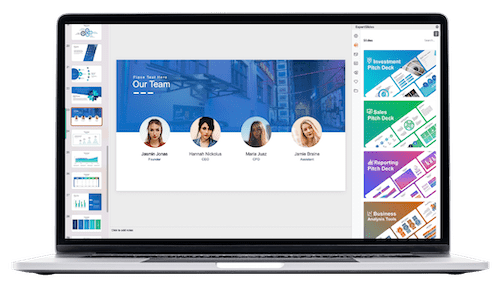Topics for Presentation at Workplace – From Nervous to Confident
Table of Contents
Effective communication is a vital aspect of professional life, and workplace presentations play a crucial role in conveying ideas and information to a group of people. Whether it’s a sales pitch, project update, or training session, the ability to deliver a successful presentation is essential for achieving success in the workplace. Presentations provide individuals with an opportunity to demonstrate their knowledge, expertise, and leadership skills, which can significantly impact career advancement.
Moreover, they offer a platform to influence and persuade others, whether it’s to secure support for a new initiative or to motivate a team to work towards a common objective. Workplace presentations are also a reflection of an individual’s professionalism and competence. A well-executed presentation can enhance one’s reputation and credibility within the organization, while a poorly delivered one can have a negative impact.
Therefore, it is essential to recognize the importance of workplace presentations and develop the necessary skills to excel in this area, which is critical for professional growth and success. To excel in workplace presentations, it is essential to understand the significance of this skill in the professional world. Presentations are not just about sharing information; they are about influencing and persuading others, showcasing expertise, and building credibility.
They are a reflection of an individual’s professionalism and competence, and can often be a deciding factor in career advancement. Recognizing the importance of workplace presentations is the first step towards mastering this skill and becoming a confident and effective presenter.
Key Takeaways
- Choose relevant and engaging topics for workplace presentations to capture the audience’s interest
- Overcome nervousness and build confidence by understanding the importance of workplace presentations
- Use visual aids and technology to enhance the delivery and engagement of your presentation
- Handle questions and feedback with confidence by practicing and rehearsing for successful workplace presentations
- Follow tips for effective delivery and engagement with the audience to transition from nervous to confident in workplace presentations
Overcoming Nervousness and Building Confidence

One of the biggest challenges individuals face when it comes to workplace presentations is overcoming nervousness and building confidence. The fear of public speaking is a common phobia, but it can be particularly debilitating in a professional setting where one’s performance is under scrutiny. However, it is important to remember that nervousness is natural and even experienced presenters feel some level of anxiety before speaking in front of a group.
The key is to manage this nervous energy and channel it into a positive force that enhances the delivery of the presentation. Building confidence in presenting at the workplace requires practice, preparation, and a shift in mindset. It is important to focus on the message being delivered rather than on oneself, and to remember that the audience is there to gain knowledge or insight from the presentation.
Additionally, techniques such as deep breathing, visualization, and positive self-talk can help manage nervousness and build confidence. With practice and experience, individuals can become more comfortable and confident in their ability to present effectively in the workplace. Overcoming nervousness and building confidence in workplace presentations is a common challenge for many professionals.
However, it is important to recognize that nervousness is natural and even experienced presenters feel some level of anxiety before speaking in front of a group. The key is to manage this nervous energy and channel it into a positive force that enhances the delivery of the presentation. Building confidence in presenting at the workplace requires practice, preparation, and a shift in mindset.
It is important to focus on the message being delivered rather than on oneself, and to remember that the audience is there to gain knowledge or insight from the presentation. Additionally, techniques such as deep breathing, visualization, and positive self-talk can help manage nervousness and build confidence. With practice and experience, individuals can become more comfortable and confident in their ability to present effectively in the workplace.
Choosing Relevant and Engaging Topics for Workplace Presentations
Selecting relevant and engaging topics for workplace presentations is essential for capturing the audience’s attention and delivering a compelling message. The topic should be aligned with the purpose of the presentation and should be of interest or relevance to the audience. It should also be presented in a way that is engaging and thought-provoking, sparking interest and stimulating discussion among the audience.
When choosing a topic for a workplace presentation, it is important to consider the needs and interests of the audience. What are their pain points or challenges? What information or insights would be most valuable to them?
Additionally, it is important to consider current trends or developments in the industry or field of work, as well as any relevant data or statistics that can support the topic. By selecting a relevant and engaging topic for a workplace presentation, presenters can capture the audience’s attention and deliver a message that resonates with them. Selecting relevant and engaging topics for workplace presentations is essential for capturing the audience’s attention and delivering a compelling message.
The topic should be aligned with the purpose of the presentation and should be of interest or relevance to the audience. It should also be presented in a way that is engaging and thought-provoking, sparking interest and stimulating discussion among the audience. When choosing a topic for a workplace presentation, it is important to consider the needs and interests of the audience.
What are their pain points or challenges? What information or insights would be most valuable to them? Additionally, it is important to consider current trends or developments in the industry or field of work, as well as any relevant data or statistics that can support the topic.
By selecting a relevant and engaging topic for a workplace presentation, presenters can capture the audience’s attention and deliver a message that resonates with them.
Tips for Effective Delivery and Engagement with the Audience
| Topics for Presentation at Workplace | Nervousness Level | Confidence Level |
|---|---|---|
| Understanding the Audience | High | Medium |
| Structuring the Presentation | Medium | High |
| Managing Nervousness | High | Low |
| Engaging the Audience | Medium | High |
Effective delivery and engagement with the audience are key components of successful workplace presentations. Presenters should focus on delivering their message clearly and concisely, using language that is easy for the audience to understand. It is important to maintain eye contact with the audience, use gestures and body language to emphasize key points, and vary vocal tone and pace to keep the audience engaged.
In addition to effective delivery, presenters should also strive to engage with the audience throughout the presentation. This can be achieved through techniques such as asking questions, encouraging participation, and using storytelling or real-life examples to make the content relatable. By actively engaging with the audience, presenters can create a more dynamic and interactive presentation that captures attention and leaves a lasting impression.
Effective delivery and engagement with the audience are key components of successful workplace presentations. Presenters should focus on delivering their message clearly and concisely, using language that is easy for the audience to understand. It is important to maintain eye contact with the audience, use gestures and body language to emphasize key points, and vary vocal tone and pace to keep the audience engaged.
In addition to effective delivery, presenters should also strive to engage with the audience throughout the presentation. This can be achieved through techniques such as asking questions, encouraging participation, and using storytelling or real-life examples to make the content relatable. By actively engaging with the audience, presenters can create a more dynamic and interactive presentation that captures attention and leaves a lasting impression.
Incorporating Visual Aids and Technology in Workplace Presentations

Incorporating visual aids and technology in workplace presentations can enhance the delivery of information and make the content more engaging for the audience. Visual aids such as slides, charts, graphs, and videos can help illustrate key points, provide context, and reinforce understanding. Technology such as presentation software, interactive tools, or virtual reality can also add an element of interactivity and innovation to workplace presentations.
When incorporating visual aids and technology in workplace presentations, it is important to use them strategically and sparingly. Visual aids should complement the content rather than distract from it, and technology should enhance the presentation rather than overshadow it. Additionally, presenters should ensure that all visual aids are clear, legible, and easy for the audience to follow.
By incorporating visual aids and technology in workplace presentations effectively, presenters can create a more dynamic and impactful experience for their audience. Incorporating visual aids and technology in workplace presentations can enhance the delivery of information and make the content more engaging for the audience. Visual aids such as slides, charts, graphs, and videos can help illustrate key points, provide context, and reinforce understanding.
Technology such as presentation software, interactive tools, or virtual reality can also add an element of interactivity and innovation to workplace presentations. When incorporating visual aids and technology in workplace presentations, it is important to use them strategically and sparingly. Visual aids should complement the content rather than distract from it, and technology should enhance the presentation rather than overshadow it.
Additionally, presenters should ensure that all visual aids are clear, legible, and easy for the audience to follow. By incorporating visual aids and technology in workplace presentations effectively, presenters can create a more dynamic and impactful experience for their audience.
Handling Questions and Feedback with Confidence
Handling questions and feedback with confidence is an important aspect of successful workplace presentations. Presenters should be prepared to address questions from the audience with clarity and poise, demonstrating knowledge and expertise on the topic at hand. It is important to listen carefully to each question, restate it if necessary for clarity, and provide thoughtful responses that address the concerns or inquiries raised.
In addition to handling questions with confidence, presenters should also be open to receiving feedback from the audience after the presentation. Constructive feedback can provide valuable insights into areas for improvement or further development of ideas. It is important to listen attentively to feedback without becoming defensive or dismissive, and to use it as an opportunity for growth and learning.
Handling questions and feedback with confidence is an important aspect of successful workplace presentations. Presenters should be prepared to address questions from the audience with clarity and poise, demonstrating knowledge and expertise on the topic at hand. It is important to listen carefully to each question, restate it if necessary for clarity, and provide thoughtful responses that address the concerns or inquiries raised.
In addition to handling questions with confidence, presenters should also be open to receiving feedback from the audience after the presentation. Constructive feedback can provide valuable insights into areas for improvement or further development of ideas. It is important to listen attentively to feedback without becoming defensive or dismissive, and to use it as an opportunity for growth and learning.
Practicing and Rehearsing for Successful Workplace Presentations
Practicing and rehearsing for successful workplace presentations is essential for ensuring a polished delivery that captures attention and leaves a lasting impression on the audience. Rehearsal allows presenters to familiarize themselves with their content, refine their delivery style, and identify any areas for improvement before presenting in front of an audience. When practicing for workplace presentations, it is important to focus on both content delivery as well as timing.
Presenters should aim to strike a balance between being well-prepared without sounding scripted or rehearsed. Additionally, practicing in front of a mirror or recording oneself can provide valuable insights into body language, vocal tone, and overall presentation style. Practicing and rehearsing for successful workplace presentations is essential for ensuring a polished delivery that captures attention and leaves a lasting impression on the audience.
Rehearsal allows presenters to familiarize themselves with their content, refine their delivery style, and identify any areas for improvement before presenting in front of an audience. When practicing for workplace presentations, it is important to focus on both content delivery as well as timing. Presenters should aim to strike a balance between being well-prepared without sounding scripted or rehearsed.
Additionally, practicing in front of a mirror or recording oneself can provide valuable insights into body language, vocal tone, and overall presentation style. In conclusion, Workplace presentations are an essential part of professional life that require individuals to effectively communicate ideas and information to a group of people. Understanding their importance is crucial for professional growth as they allow individuals to showcase their knowledge, expertise, leadership skills while influencing others within an organization.
Overcoming nervousness by practicing deep breathing techniques or visualization exercises will help build confidence when presenting at work. Choosing relevant topics aligned with your purpose will capture your audience’s attention while delivering your message clearly will keep them engaged. Incorporating visual aids strategically will enhance your presentation while handling questions with confidence will show your expertise on your topic.
Practicing your delivery style will ensure you have polished your skills before presenting at work which will leave a lasting impression on your audience.
FAQs
What are some common topics for presentation at the workplace?
Some common topics for presentation at the workplace include project updates, new product launches, team achievements, industry trends, and professional development.
How can I overcome nervousness when presenting at the workplace?
To overcome nervousness when presenting at the workplace, you can practice your presentation multiple times, focus on your breathing, visualize a successful outcome, and remind yourself of your expertise in the topic.
What are some tips for delivering a confident presentation at the workplace?
Some tips for delivering a confident presentation at the workplace include maintaining eye contact, speaking clearly and at a moderate pace, using visual aids effectively, and engaging with the audience through questions and discussions.
How can I prepare for a presentation at the workplace?
To prepare for a presentation at the workplace, you can research your topic thoroughly, organize your content in a logical manner, create visually appealing slides, and anticipate potential questions from the audience.
Get 15+ Mio. PowerPoint Assets - FREE SIGN-UP

Sign up for free to our PowerPoint extension, ExpertSlides. Everything you need, directly in PowerPoint. No credit card required.
Related Posts
Recent Posts
- How Do You End a Presentation – Mastering the Last Impression
- Good Color Combinations for Presentations – The Science of Color
- Interesting Ideas for PowerPoint Presentation – Captivate Your Audience
- History Presentation Template – Step Back in Time
- Canvas Presentation Template – Unleash Your Creativity
Main Menu
Knowledge base
Useful Links






